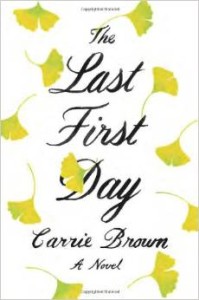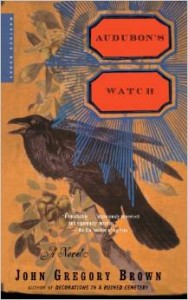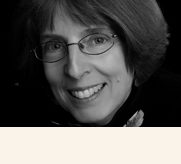
After attending an excellent James River Writers panel discussion (“The Writing Show”) and Master Class in April with authors John Gregory Brown and Carrie Brown, I went home and revised my novel.
The Browns gave the audience some great tips, and one that particularly intrigued me was this: take the most unbelievable moment in your story, and put it first. Right up front. The opening paragraph. The opening sentence. Just lay it out there. Readers enter into a story on the first line. It’s the place where they’re most willing to suspend disbelief, so don’t delay that suspension. Hook them and take off running.

John Gregory Brown noted that if Kafka had waited until page three to tell us that Gregor Samsa had turned into a cockroach, we might have questioned and dismissed that bizarre transformation. Here is Kafka’s opening line to The Metamorphosis:
One morning, as Gregor Samsa was waking up from anxious dreams, he discovered that in bed he had been changed into a monstrous verminous bug.
We might quibble with other aspects of this sentence (waking up is oh-so-overdone as an opening, and the participle isn’t as effective as straight-on past tense, and passive voice is oh-so-distancing), but hey—the unbelievable happens right away. It launches us into the story. And that was Brown’s point: readers will accept the unbelievable when a writer gives it to them straight-up. If you wait to give it to them later, you may have missed your chance.
 But here’s the thing: most writers can’t know what their first sentence or paragraph or chapter will be until they’ve written the last sentence. If you’re worrying about your opening before you’ve finished the first draft, I think you’re wasting time. Sure, it’s part of the process, and you can pat yourself on the back for that. But I think you need to push yourself all the way to the end before stewing over the beginning. Figure out what your story is really all about. Identify the essential conflict. Identify the most unbelievable moment in the story, the one that will strain your readers’ credibility. Then put that moment first and see how the story falls out from there.
But here’s the thing: most writers can’t know what their first sentence or paragraph or chapter will be until they’ve written the last sentence. If you’re worrying about your opening before you’ve finished the first draft, I think you’re wasting time. Sure, it’s part of the process, and you can pat yourself on the back for that. But I think you need to push yourself all the way to the end before stewing over the beginning. Figure out what your story is really all about. Identify the essential conflict. Identify the most unbelievable moment in the story, the one that will strain your readers’ credibility. Then put that moment first and see how the story falls out from there.
The other take-away from my April visit to this James River Writers’ program was the reminder of how good it is to be part of a creative community. Richmond is a fabulous town in which to be a writer. While I love spending hours alone at my writing desk, I find that getting out and engaging with other writers juices me up.
 John Gregory Brown teaches at Sweet Briar College, and Carrie Brown at Hollins University, and I don’t have to be enrolled in either of their esteemed institutions to encounter them and benefit from their insights. I just have to seek out opportunities in my town. There are a lot of them (from conferences to workshops to panel discussions), and if I glean so much as (or as little as) one tidbit from each outing, my writing benefits. It’s all good.
John Gregory Brown teaches at Sweet Briar College, and Carrie Brown at Hollins University, and I don’t have to be enrolled in either of their esteemed institutions to encounter them and benefit from their insights. I just have to seek out opportunities in my town. There are a lot of them (from conferences to workshops to panel discussions), and if I glean so much as (or as little as) one tidbit from each outing, my writing benefits. It’s all good.


Great advice, and thank you for reporting on this valuable workshop, for those of us who couldn’t be there! I just realized that I’ve probably started a new novel in the wrong place, but your point that I should keep going is well taken, especially since in the process I’ll probably figure out where I need to begin.
I hear you, Lyn! You know… sometimes I’m just talking to myself when I write these blog posts. After hearing the Browns speak, I did some major revisions on my WIP — and that was back in May. In early June I decided on a different opening scene. This morning I started all over again, deciding that I’d try to tell this story from the POV of a different character (formerly a secondary character). Now, not only do I have a new opening scene, but I have a new protagonist. I’ll have to see how it all shakes out.
I wouldn’t be able to try these various approaches if I hadn’t finished (back in April) a complete first draft. At this point, I have a good sense for what happened between these characters, and now I’m asking what angle creates the most sympathetic viewpoint? What structure ups the dramatic tension? Ahhh… gotta love the process because it’s ridiculously time consuming!